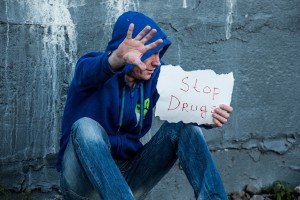
 By Venkatesh Raghavan
By Venkatesh Raghavan
Mumbai: Starting with arrests under the Narcotic Drugs and Psychotropic Substances Act, 1985 (NDPS Act) that occurred close on heels to actor Sushant Singh Rajput’s alleged suicide abetment case, down the line to Bollywood superstar Shah Rukh Khan’s son Aryan Khan and his colleagues the application of multiple sections of the NDPS Act that was framed way back in 1985 and amended providing relief to addicts in 2001, a trail of excessive use of force making mountains out of mole hills has surfaced.
It all started with the arrest of actor Rhea Chakraborty, an ex-girlfriend of the deceased actor. She was initially charged with section 27A of the NDPS Act. Section 27A covers production, possession, sale, purchase, transportation, warehousing and use of narcotic drugs. Subsequently, Rhea and 10 others were arrested under sections 20(b) (ii), 22, 27A, 28, 29 and 30 of the NDPS Act. To summarize the charges covered by these gamut of sections, it involves possession of narcotic drugs, financing illicit traffic of narcotic substances, harboring drug offenders besides being actively involved in criminal conspiracy to administer such drugs to a third party and also abetment by facilitating such a conspiracy.
The relief measures for addicts trapped in NDPS cases, fall under section 64A and are applicable to drug users of small quantities who volunteer to undergo remedial de-addiction treatment. At the other extreme, the penalty for being caught with drugs that involve commercial quantities might attract a death sentence under section 31A. This section is applicable to drug offenders who are faced with repeated conviction.
Coming to the arrest of Aryan and friends off the cruise ship near the Mumbai coast on October 2, Section 8C, 20(b), 27 and 35 of the NDPS Act have been invoked. While 8C covers a whole gamut of activities ranging from manufacture to transport, storage and end user supply, besides export and import of narcotic substances without proper license; 20(b) is for possession of cannabis and is deemed a punishable offence. Section 20(b) also attracts lesser penalties in terms of jail sentences ranging from six months to one year and fines ranging from INR 1 lakh to INR 2 lakh being imposed on those who get convicted.
Section 27 also addresses the nature of the narcotic substances that are consumed and includes cocaine, morphine, diacetyl-morphine and other such “hard drugs” as classified in the central government gazette. The fine amounts for small quantities in this category extend from INR 10,000 to INR 20,000.
Another relief provision features under Section 35 of the NDPS Act. If the accused is able to prove to the court that he or she was not in possession of a culpable mental state when consuming the drug the person is entitled to relief from imprisonment. The word culpable here includes intention, motive, having knowledge of the fact or reason to believe a fact. The section also prescribes different sentence periods for different drugs. For instance, while cocaine attracts a one year sentence, cannabis can result in up to six months of imprisonment.
Legal circles in the city believe that the NDPS for the past one year has been on the overkill drive as none of those netted in its arrests are anywhere near being professional drug traffickers or for that matter either manufacturers or commercial suppliers. To sum up, they opined, most of the arrests pertain to the possession or supply of a few grams of a narcotic substance and such cases merit bail on the very next day after arrest.





